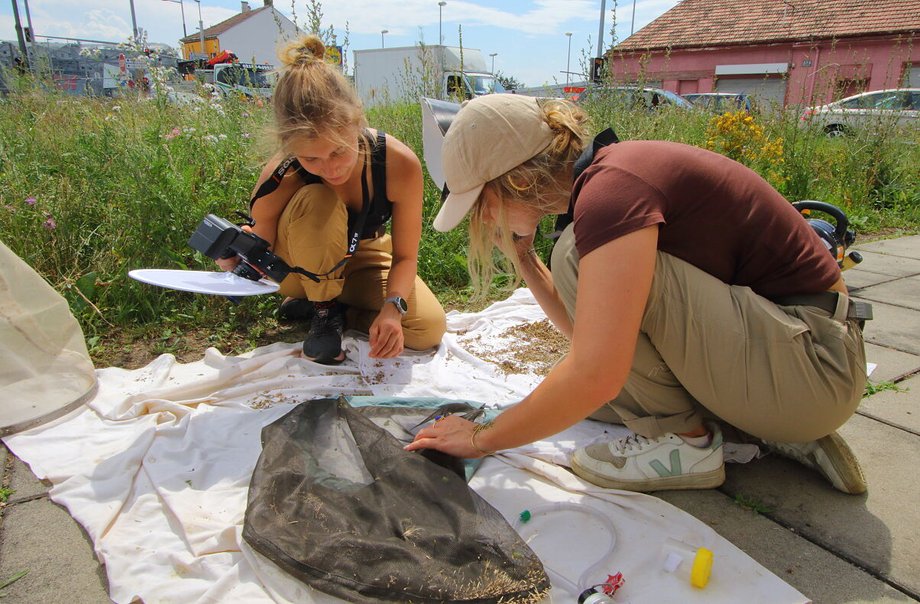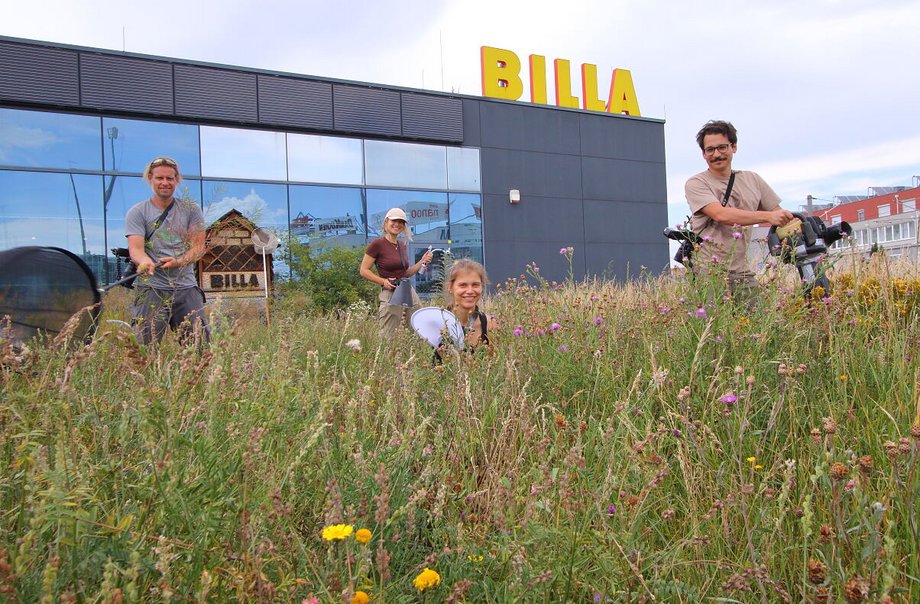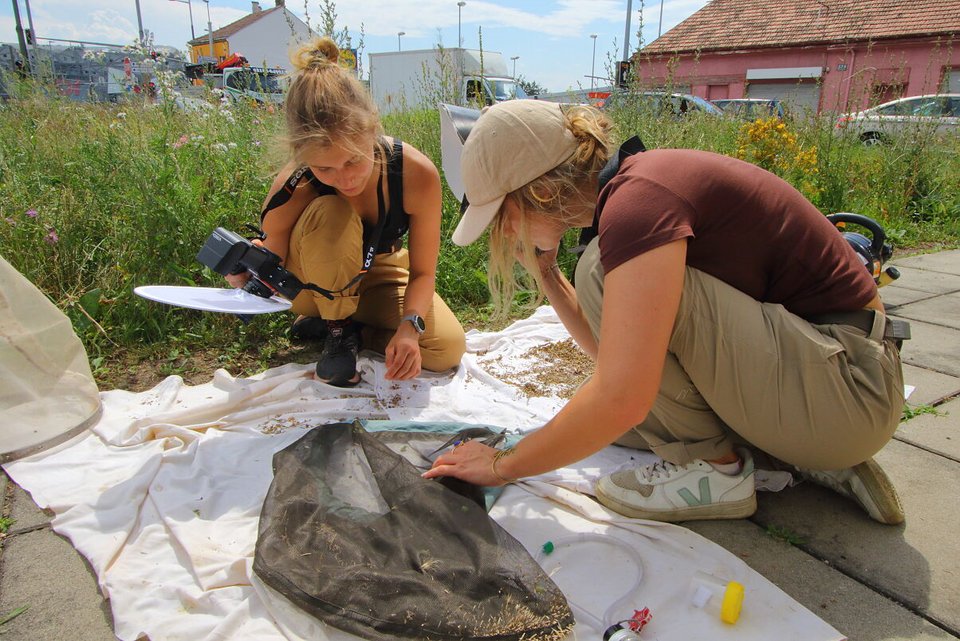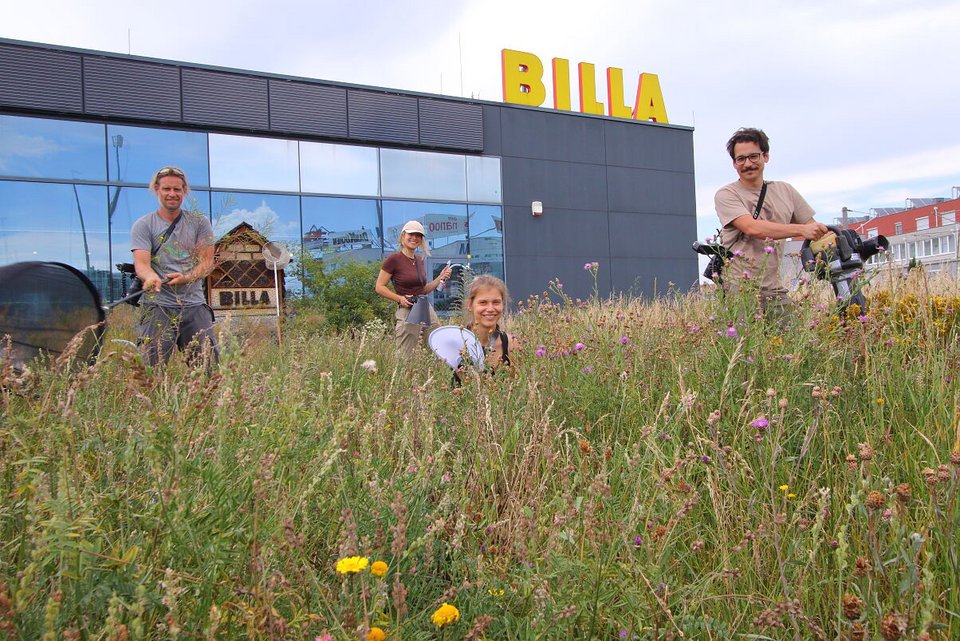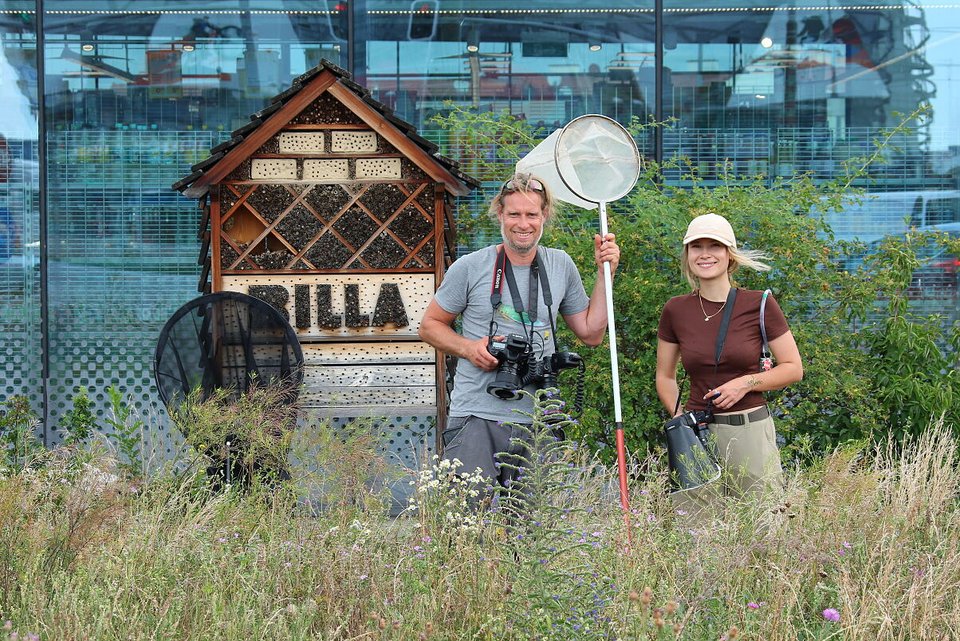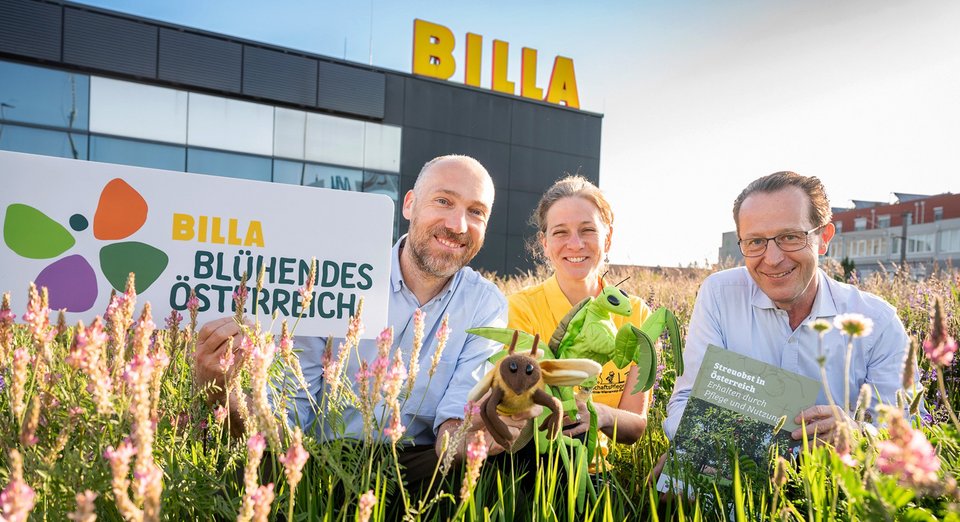
Exemplary: BILLA has created the highest quality flowering areas in terms of nature conservation over several hectares. This is the result of zoological monitoring carried out by the Karl-Franzens University of Graz, Institute of Zoology, on renaturalised green spaces at BILLA stores.
The zoological monitoring, led by Dr Gernot Kunz, examined a total of 20 renaturalised green spaces between 210 and 810 square metres at BILLA stores in Lower Austria as well as a lawn mower meadow in Styria that is still intensively managed with regular mowing. The monitoring revealed that up to 330 species occur on the renaturalised flowering areas. Only around 190 species were found on the intensively managed meadow.
"The study shows that properly managed and renaturalised green spaces at BILLA supermarkets are already important stepping stone biotopes and even core habitats for numerous endangered and endangered species, thereby helping to safeguard our biodiversity. With well over 1,000 species - some of which are highly endangered - including plants and fungi, the BILLA shops analysed make an important contribution to the conservation of local flora and fauna. A gradual expansion of these measures to green spaces at BILLA stores throughout Austria is underway," says project manager Gernot Kunz
"In times of global species extinction, the nature-orientated design of previously intensively farmed areas is an obligation for us all. By renaturalising green spaces, BILLA is sending out a clear signal that regional extinction processes can also be reversible. Rare butterflies are a thank you for this," says Dr Peter Huemer, Management Board of Blühendes Österreich and curator of the natural science collection of the Tyrolean Provincial Museums.
BILLA has been renaturalising green spaces around its stores into natural meadows since 2018. So far, around 30,000 square metres of land at 40 BILLA and BILLA PLUS locations have been converted into flowering areas. Since the beginning, the project has been supported by nature conservation experts and organisations such as the Thermenlinie-Wienerwald-Wiener Becken landscape conservation association at many locations south of Vienna. As part of the project, the gardening companies commissioned were also trained in nature conservation by the nature conservation experts.
Another new standard for newly built BILLA and BILLA PLUS stores is extensive greening in the form of trees, natural meadows and green roofs and façades. These are carried out on the basis of a specially created manual, ensure a cooling microclimate and promote biodiversity. The BILLA PLUS in Baden and the BILLA in Oberwaltersdorf, among others, are lush and green.
The study by Dr Gernot Kunz can be read here:billa Biodiversity Roof Project - iNaturalist
A further 15 experts were involved in the monitoring together with Gernot Kunz. They identified and collected the following species groups: Bugs, beetles, short-winged beetles & ground beetles, mites & springtails, bumblebees, reptiles, amphibians, bats, dragonflies, plant wasps, grasshoppers, cicadas, butterflies, wild bees, digger and wrinkle wasps, birds, grasshoppers, web-flyers, leaf fleas, cockroaches, earwigs and arachnids. Among the species observed in the renaturalised areas are several "endangered" and "critically endangered" species. In the group of butterflies, a total of 67 species were recorded, 18 of which were butterflies. All the animals observed were documented photographically by the biologists and placed on theiNaturalistreporting platform in collection projects and an umbrella project. In this way, 300 additional identifiers, mainly from Europe, were recruited to verify the uploaded datasets. In addition, all collected data sets are publicly accessible and are available for biodiversity research and nature conservation.

